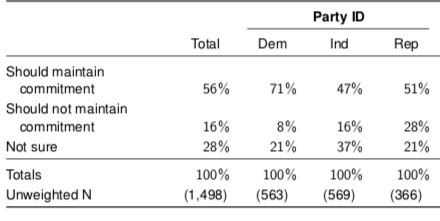So what happens if we re-weight the data to 2017 General Election turnout levels?
In short - a Labour surge...
1/1
We do know is that it is modelled based on 60% overall turnout. The 2017 general election turnout was 68.8%.
This matters. Occasional voters are more likely to vote Labour.
2/2
18-24: 55%
25-34: 56%
34-44: 57%
45-54: 66%
55-64: 70%
65+: 70%
Voting intention comes out as:
CON: 37.8% (-5.2%)
LAB: 34.1% (+2.1%)
The gap closes by 7.3% - to just 3.7%.
3/3
1) Assuming overall turnout is going to be 60%
2) Assuming that younger people will not vote in similar numbers to 2017
3) Assuming that older people will vote in greater numbers than 2017
4/4
But even other pollsters, who use self-reported turnout, are nowhere close to using turnout numbers comparable to 2017.
If the election ends up with similar turnout, they are all over-stating the Con lead.
5/5












